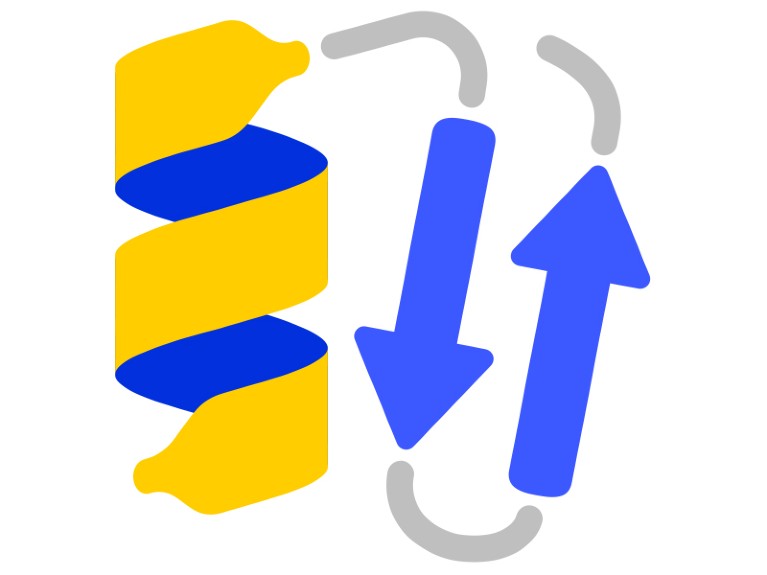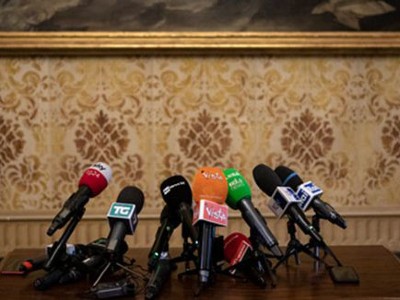
There are a handful of science-based emojis already; should there be more?Credit: Agnese Abrusci/Nature
In 2018, a number of science emojis, including a DNA molecule, microbe, laboratory coat and Petri dish, appeared on our phone keyboards. Over the following three years, several other science emojis arrived, among them the stethoscope, blood droplet and sticking plaster in 2019, the heart organ in 2020 and the X-ray scan in 2021. In July 2022, Andrew White at the University of Rochester in New York submitted a bid for a protein emoji. He shares his motivation for doing so and what he learnt from the submission process — which was unsuccessful.
Why do we need a protein emoji?
Emojis are part and parcel of how we communicate now, and I think they’re an important addition to the arsenal of science communicators. The launch of new emojis every year on 17 July — World Emoji Day — tends to garner substantial media attention. In 2022, there were 31 new emojis, including a shaking face, ginger root, flute, jellyfish and donkey.
A year ago, my colleague Kresten Lindorff-Larsen at the University of Copenhagen, who uses computational methods to understand how changes in protein structures affect their functions, pointed out to me that a search for ‘protein’ on major search engines would yield only meat and nutrient images. But proteins are more than that.
DNA is recognized as the language that encodes life, but proteins are the actual agents of life. I think having a protein emoji would be useful for science communication, similarly to how the DNA emoji has come to represent advances in genomics and sequencing.
When did emojis begin?
Emojis emerged in the late 1990s, first appearing on Japanese mobile phones. Currently, there are more than 3,600 recognized emojis. They each have their own number in Unicode — the standard, used almost everywhere, for the consistent encoding of text in many languages globally.
In 2015, the Oxford Dictionaries named the emoji ‘Face with Tears of Joy’ as the word of the year. Since the 1990s, emojis have become much more inclusive, with, for example, an expansion in the skin colours available for human characters and the addition of symbols from many cultures.
How did you develop an interest in emojis?
A year and a half ago, I started getting interested in the use of emojis as a science-communication tool after seeing people doing emoji arithmetic on Twitter. For example, demonstrating the properties of logarithms: log (😅) = 💧log (😄). People were just inventing them on social media, but I found a paper that showed how to represent emojis as vectors, effectively using them as a form of mathematical algebraic notation.
One fun example I created shows that if I subtract a ‘man’ emoji from a ‘king’ emoji and add a ‘woman’ emoji, the output is a ‘queen’ emoji. I even created a periodic table of elements using emojis and then wrote a program that draws molecular structures with those emojis.
How did you form a group to submit an emoji?
While I was reading up on emojis, I learnt that anyone could propose one. I was interested in creating a protein emoji and, in July 2021, while scrolling through Twitter, I saw that Kresten was thinking about doing the same. We formed a team with Michael Osadciw, a graphic designer at the University of Rochester, who designed the protein emoji graphic.
My team conducted a survey on Twitter in March 2022 to find out how the scientific community would prefer the protein structure to be represented — as cartoonish helices and ribbons, or as space-filling textured objects such as those pioneered by David Goodsell (a computational biologist at Scripps Research in La Jolla, California, who is also an artist specializing in depicting cell interiors). More than 800 people responded to the survey; 70% preferred the helix and ribbon design, which we ultimately used.

Andrew White’s proposed protein emoji.Credit: Michael Oscadciw
In July 2022, I attended the Gordon Research Conference on computational chemistry in Castelldefels, Spain, where I presented the protein emoji and got feedback and support from the community. I submitted the proposal a week later.
How does the emoji submission and review process work?
There is an emoji subcommittee of the Unicode Consortium that includes representatives from businesses such as Apple, Meta and Microsoft, and the reference website Emojipedia, which decides what emoji proposals are suitable. However, it isn’t too clear to me what the evaluation criteria are.
Making a submission is free, and consists of providing a proposal, usually five to ten pages long, detailing why the emoji is needed, the usage frequency for its word equivalent (the higher the better) and design considerations. The review process takes about four months.
Collection: Science communication
When an emoji is accepted, businesses such as Apple and Samsung will get their illustrators to create the equivalent emoji, and this will be released on World Emoji Day (which even has its own emoji!). If an emoji gets rejected, the submitter has to wait two years before re-submission. However, the chances of getting accepted in a re-submission are low. We received our initial rejection on 5 November last year.
The subcommittee made the point that it receives “far more emoji proposals than the very limited number that can be encoded” each year, and that it’s only a small volunteer-run non-profit organization. I have some sympathy with that, of course.
What did you gain from the experience?
My team and I are disappointed that our proposal was not selected, but I have learnt so much during this process. I learnt about the history of emojis and fun facts, such as that emojis originated from Japan, which is why there are Japanese kanji character emojis, although there are now rules excluding emojis from being words or characters. I also learnt that when the DNA emoji was announced, some companies got the chirality (left- or right-handedness) of the DNA molecule backwards. When we submitted our protein emoji, we were very careful to indicate the chirality of our protein.
Where can readers find resources about submitting emojis?
The Unicode website has instructions on how to submit a proposal for new emojis. The non-profit organization Emojination also has free proposal templates.


 How I switched from academia to science communication
How I switched from academia to science communication
 What scientists can expect when dabbling in science writing
What scientists can expect when dabbling in science writing
 ‘Arms race with automation’: professors fret about AI-generated coursework
‘Arms race with automation’: professors fret about AI-generated coursework





